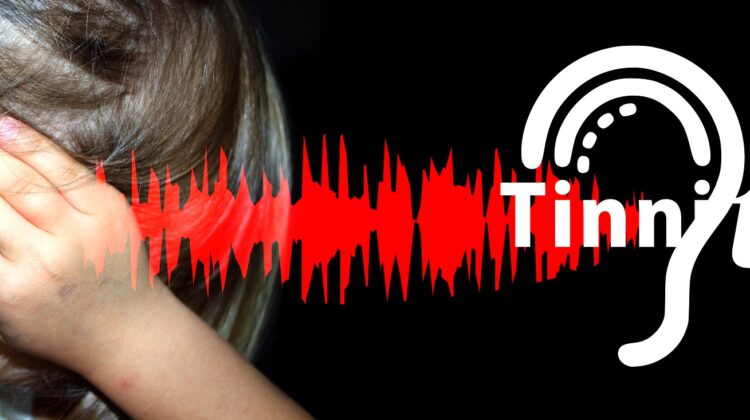
This week is Tinnitus week! All over the world people suffer from Tinnitus and in this blog post we point attention to poor working environments in schools that lead to increased Tinnitus for teachers. In a recent blog post we focused on dentists’ working environment – and 42% of the participants in a survey experienced Tinnitus! Read more about it here. 
Little over 15 years ago a research study made by the National institute of occupational health in Denmark showed that male teachers were more likely to develop Tinnitus than both male constructions workers and carpenters – despite the fact that the sound environment is defined as NOT as noisy[1],[2],[3].
At the same time statistics showed that 5 out of 6 teachers with Tinnitus didn’t get their Tinnitus recognized as an occupational injury by The National Board of Industrial Injuries (now Labour Market Insurance)[4]. These numbers stand out…
The overall reason why the teachers didn’t get their Tinnitus recognized was because they couldn’t prove that they had been exposed to sound pressure levels between 80-85 dB all day long – 5 years in a row[5],[6]. Because this is how you get Tinnitus! Or is it?
Teachers, pedagogues, noise and tinnitus
Today we know a lot more about Tinnitus and how it can be developed – so let’s take a look at a newer report about the same topic: teachers (+ pedagogues), noise and tinnitus.
 A survey by the National institute of occupational health in Denmark unfortunately showed that 6 out of 10 teachers (and 7 out of 10 pedagogues) were exposed to unwanted noise more than ¼ of their working day. Half of all pedagogues were exposed to so high sound pressure levels more that ¼ of their working day that they had to shout to be heard by a colleague standing next to them.
A survey by the National institute of occupational health in Denmark unfortunately showed that 6 out of 10 teachers (and 7 out of 10 pedagogues) were exposed to unwanted noise more than ¼ of their working day. Half of all pedagogues were exposed to so high sound pressure levels more that ¼ of their working day that they had to shout to be heard by a colleague standing next to them.
This also was also the condition for every 3rd school teacher[7]. This is what the teachers and pedagogues state themselves – and unfortunately they are still in the risk zone of getting Tinnitus despite the lack of proof.
Unfortunately, it is today just as hard to get the Tinnitus recognized as an occupational injury as it was 15 years ago – and the teachers are not only still to proof high sound pressure levels, they have to have Tinnitus on both ears AND they also have to have a hearing loss.
If they cannot prove all of that – they never got their Tinnitus because of work!
Because of this, one could say that we have to help the teachers BEFORE they get Tinnitus – because it is SO difficult for them to prove that they ‘got’ just by doing their job!
Acoustic research
 Acoustic research since many years has shown that teachers complain about high peak levels and high background levels in the classroom – but nearly no one has ever measured constant sound levels over 80 dB – that will most likely never happen in learning environments.
Acoustic research since many years has shown that teachers complain about high peak levels and high background levels in the classroom – but nearly no one has ever measured constant sound levels over 80 dB – that will most likely never happen in learning environments.
Despite that, we have seen that teachers suffer in rooms with bad acoustics ( – and acoustics can still be bad when the sound levels are below what the Danish Labour Market Insurance defines as causing hearing damage!). Bad acoustics in classrooms are not only about high sound levels – but is also about late reflections, long reverberation time and bad speech clarity.
The outdoors
 We need to create learning spaces that look more or less like the outdoors where the ‘acoustic sky’ (sound absorbing ceiling) will absorb sound and we need to mimic wide open spaces (sound absorbing wall panels) where the sound propagate and travel far without coming back.
We need to create learning spaces that look more or less like the outdoors where the ‘acoustic sky’ (sound absorbing ceiling) will absorb sound and we need to mimic wide open spaces (sound absorbing wall panels) where the sound propagate and travel far without coming back.
We need to understand that even calm behavior and great class discipline can cause a lot of noise when the acoustics of a room are bad – and working in such conditions WILL affect the teachers.
We cannot close our ears; we WILL get tired and stressed out if the hearing never has a calm moment. It does not always take 80-85 dB – 8 hours/day – 5 years in a row to get tinnitus. Sometimes all you need is high peak levels during the day and a constant babble.
Improving the acoustics could prevent Tinnitus and have so many other benefits as well – this can e.g. be better behavior and/or inclusion of hearing impaired children[8] or even lower heart rates for teachers (lower stress levels)[9].
[1] National institute of occupational health – Report: Noise and health 2006
[2] The Work environment in Denmark 2000″, January 2002
[3] The Danish National Association for Better Hearing, February 2002
[4] https://issuu.com/cecilieengholm/docs/skolel_rere_savner_anerkendelse_for_arbejdsskader
[5] The National Board of Industrial Injuries – 2015
[6] https://ast.dk/arbejdsskader/ydelser/der-er-forskellige-betingelser-der-skal-opfyldes-for-at-fa-godtgorelse-ved-tinnitus
[7] National institute of occupational health – Report: Noise and health 2014
[8] The Essex Study – http://www.acousticbulletin.com/EN/Ecophone_Essex_6ppA4_v8_LO_Singles.pdf
[9] Acoustic Ergonomics of Schools, Bremen University, 2006 (conference proceeding on the topic: http://www.acousticbulletin.com/EN/SS07-014.pdf)

